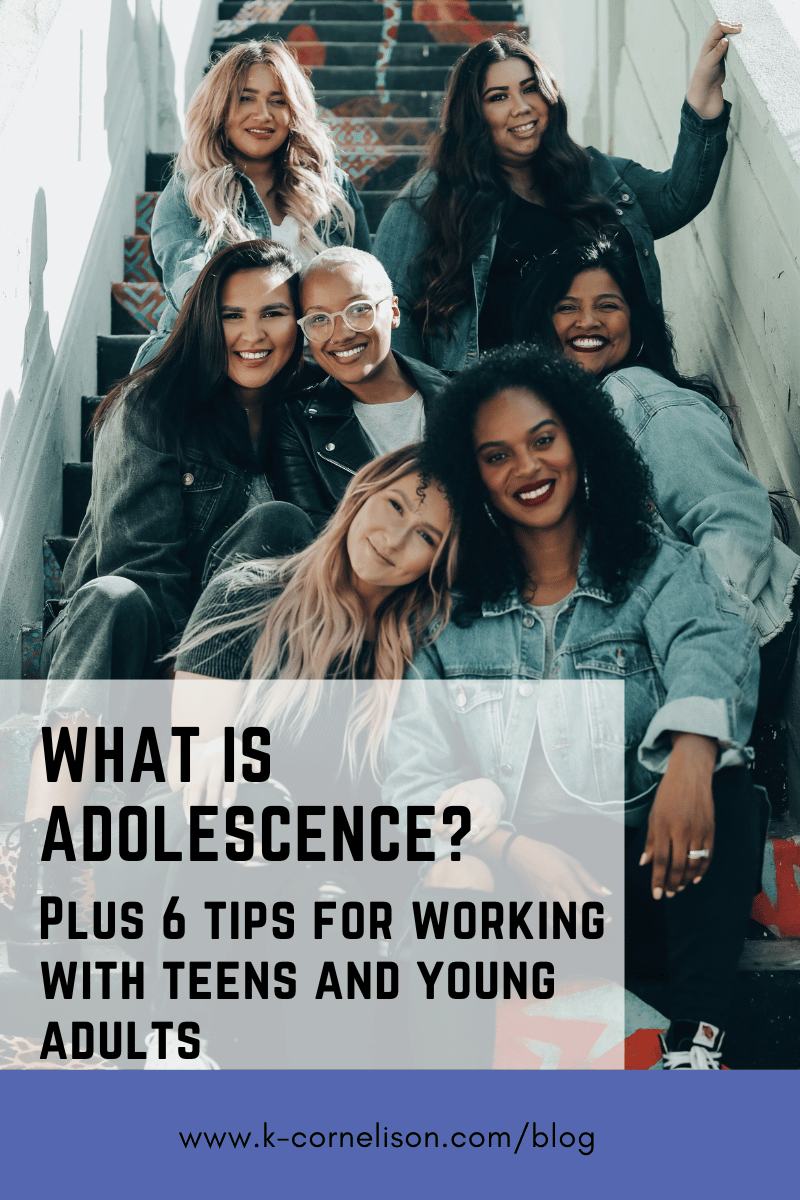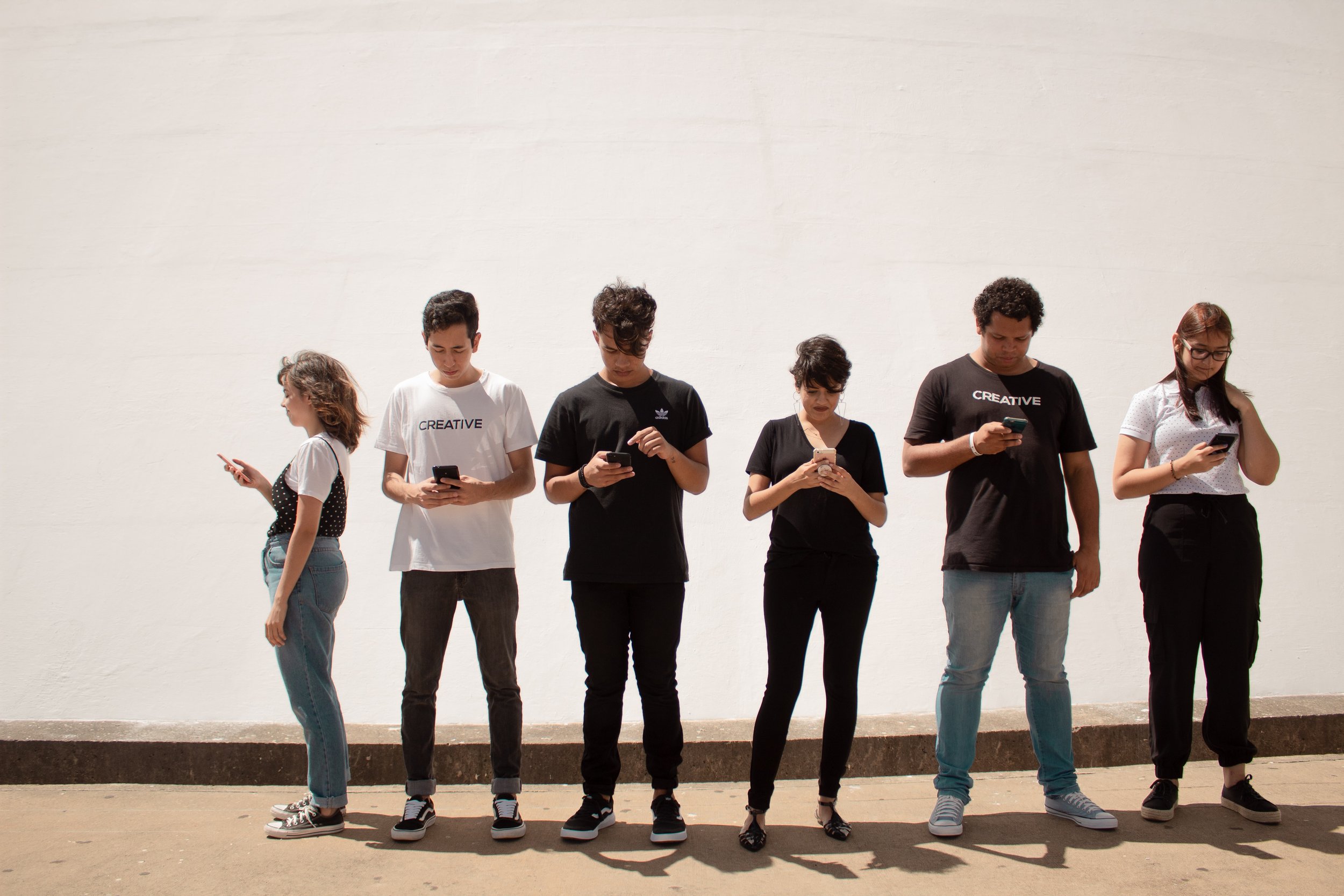What is Adolescence?
One of the reasons I love working with teens and young adults is that adolescence is a completely unique time of life. Adolescents are not kids but not yet adults. They are their own extraordinary group with particular needs and who are going through very specific types of development. It’s no secret that it takes a certain type of person to work with adolescents. When I hear folks say “I could NEVER work with teens…” my guess is usually that they haven’t made that mental shift to understanding that adolescent development is its own ✨ thing ✨ and we have to look at it that way.
Adolescence Defined
First and foremost what IS adolescence? Adolescence is more than just the physical changes of puberty. It’s a transitional stage of development between childhood and adulthood. It's marked by physical, cognitive, emotional, and social changes as young people navigate their way toward independence and identity formation. It's a period of exploration, self-discovery, and growth. Exciting, right?! It’s hard to pinpoint a specific age range for the adolescent period and different entities define it differently. The World Health Organization says 10-19 and the American Academy of Pediatrics says 11-21. In many ways the exact age range is arbitrary but I’m in favor of using a broader definition of about 12-24 years old. This accounts for the onset of puberty and the fact that the prefrontal cortex (the part of the brain that thinks about long-term consequences) is still developing into our mid 20s. Of course, adolescents who are 12 or 13, have different needs than those who are 23 or 24 but they’re all experiencing a transitional period of life that could benefit from extra support.
Characteristics of Adolescence
Adolescence is characterized by a variety of physical, cognitive, emotional, and social changes. It’s often viewed as a particularly difficult time of life and there’s a reason for that! During adolescence we go through some of the biggest developmental changes that impact us long into adulthood. Some key markers of adolescent changes include:
Physical growth and development: Adolescence is marked by the onset of puberty, during which young people undergo significant physical changes, including growth spurts, development of secondary sexual characteristics, and changes in hormones.
Identity Exploration and Formation: Adolescents explore and develop their sense of self, including their values, beliefs, interests, and aspirations. They seek to understand who they are and where they fit into the world.
Increased Autonomy: Adolescents strive for greater independence and autonomy from their parents or caregivers as they seek to make decisions and choices that reflect their growing sense of self.
Peer Relationships: Peer relationships become increasingly important during adolescence, serving as a source of support, validation, and influence. THis includes both friendships and romantic and sexual relationships. It’s developmentally appropriate for adolescents to want to spend more time with peers and less time with parents/caregivers.
Emotional Intensity: Adolescents may experience heightened emotions, including intense feelings of joy, sadness, anger, or anxiety, as they navigate relationships, identity formation, and the stress of figuring out what’s next.
Risk-taking Behavior: Adolescents are more likely to engage in risk-taking behaviors. While this piece of adolescence can feel particularly scary for parents and caregivers, young people need to be able to take risks and try new things.
Cognitive Development: Adolescents undergo significant cognitive development, including improvements in abstract thinking, problem-solving skills, and the ability to consider multiple perspectives.
Tips for Working with Adolescents
Embrace a risk-reduction framework
As I mentioned earlier, risk-taking behavior is a cornerstone of adolescent development. And while we don’t want to fully prevent risk-taking, we do want to keep young people safe. Embracing a risk-reduction framework allows us to accept that young people can and should take risks but also provides them with tools and information they need to take those risks safely. For example, we can share the risks of drinking alcohol with adolescents but cannot guarantee that they won’t drink. In addition, we can share tips on
Don’t try too hard to be cool
I think it’s a myth that teens want the adults in their lives to use the same slang or dress the way they do. While we might assume that makes us more relatable, I think in reality, teens ALWAYS know when adults are trying too hard and find it cringy. Instead, I embrace our differences in perspectives, style, and way of talking and use that as a way to engage. I’ll ask questions like “what’s your favorite social media app?” “What does that word mean for people your age?” I want to know enough to ask the right questions but not pretend to be their peer. Adolescents are looking for a supportive adult, not another friend.
Ask, listen, and be patient
Patience is the name of the game with adolescents. I find that it might take more time to build trust with young people than with other age groups and that the best strategy is to be genuine, ask questions that you really want to know the answers to, and listen to and remember their responses. Remember that girl from 5th period that was rude last week. Remember the professor that gave them a C when they thought it should have been an A. Remember the song their crush sent them. All of these small details add up to adolescents’ worlds and do wonders for not only building rapport but also understanding their lives, stressors, and relationships.
Take them seriously
So often, young people are not taken seriously due to their age. I’ve heard it a million times, “they’re too young to know their gender identity”, “someone that age can’t possibly understand love”, “teens can’t make good decisions for themselves.” As you can imagine, this immediately causes young people to shut down. Their experiences, emotions, and thoughts are just as valid as anyone else’s and we miss an opportunity to connect if we chalk up intense feelings or identity exploration as less important or impactful due to age.
Be frank and factual about sex and sexual health
Not all adolescents are interested in sexual relationships but those who are, need medically accurate and inclusive information about their bodies and the physical and emotional risks when it comes to sexual activity.
Never stop working on inclusion
One thing that I love about adolescents is that they are on the forefront of identity exploration. If there’s a new way to use pronouns or a new term for sexual orientation that better encapsulates how they feel, young people are going to be the first ones to know. As adults, we cannot get complacent by thinking that we know every term or identity out there. Young people are constantly evolving their language and how they identify themselves. It’s up to us to stay in the know, ask questions, and honor their identities and experiences.
Understanding and embracing the complexities of adolescent development is essential for anyone working with teens and young adults. From the onset of puberty to the formation of identity, from increased autonomy to heightened emotional intensity, adolescents navigate a multitude of challenges and opportunities as they transition from childhood to adulthood. By recognizing and honoring the unique needs and experiences of adolescents, we can foster environments that empower them to thrive and reach their full potential as they navigate this transformative stage of life.
Want more support on navigating adolescence? Check out my live and on-demand trainings on topics like Healthy Teen Social Media Use and Relationships, Sexuality, and Identity. Questions? Reach out to me directly!




